“Computing is too important to be left to men”
-Karen Sparck Jones,
Former Professor of Computers and Information,
Cambridge University.
Any conversation about women in STEM can very quickly spin towards a controversial direction. But don’t you think that it’s a controversy worth addressing?
Women and girls have been systematically guided away from STEM education throughout their educational periods. This has veritably limited their options and opportunities to be part of these fields as adults. When talking about women in technology or women in STEM, one can find a very limited number of resources while the number of men are so high in the system that names get lost in all the achievements.
In this blog, we are going to finely comb through this problem and try and figure out a solution to it.
A History of Women in STEM

When talking about women in STEM, policymakers and scholars have noted that STEM fields (science, technology, engineering, and mathematics) have had male predominance where women, historically, have low participation since these fields originated in the 18th century- the Age of Enlightenment.
However, women have been engaged in STEM careers for longer than we think. For example, Amelia Earhart flew solo across the Atlantic Ocean. Mae Jemison traveled to space. Margaret Hamilton founded two software companies. Each of these women in STEM history was successful in pioneering their own paths into a career that was dominated by men. Not only that but they left a legacy for the future generations to remember them by and surpass.
There has been a gender disparity in STEM fields for a while now. Scholars have been exploring the reasons behind this continued gender disparity. Some who think of this disparity as a result of discriminatory forces are actively seeking ways to change it (these typically translated as well-compensated professions of high-status with universal career appeal).
Here is a collection of stories of women from across the Administration about their personal heroes across the fields of science, technology, engineering, and math (STEM).
Check out their stories here
Current statistics of women in STEM
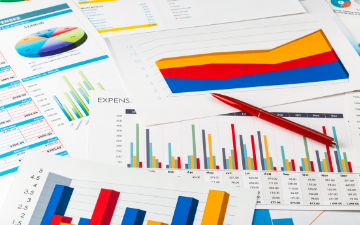
Women in STEM statistics constitute only 28% of the employees in Science, Technology, Engineering and Math (STEM), while men widely outnumber women majoring in most STEM fields in college. The fastest-growing and the highest paid jobs of the future have particularly seen the most gender of the future, like engineering and computer science.
STEM (Science, Technology, Engineering, and Mathematics) occupations are anticipated to experience speedy growth in the upcoming decade. In the US, the most sought-after skills are Technology and Engineering. However, this gender gap in STEM perseveres across the globe.
The gap between men and women
The gap between men and women begin early in education, which is fuelled
by expectation and gender stereotypes concerning “women’s work.” Even though achievement scores among all genders are similar in math and science, men have been an overwhelming majority among students studying STEM fields for their higher education.
Women, who begin their careers in STEM, have to deal with male-dominated workplaces where discrimination runs amok. Among their problems lie their contributions being ignored, isolation because of lack of contact with women role models, peers, and mentors, the disparity in salaries where women are paid less. Women break away from STEM careers at a much higher rate than men, especially among working parents.
A system of bias has been noticed that expunge women (and people of color) out of STEM careers. It also has the ability to influence the services and products constructed by STEM organizations, like artificial intelligence (AI). These issues can be addressed by effective organizational strategies made to recruit, retain, and advance women in STEM occupations.
Here are a few statistics:
- In 2016, women in Scientific Research and Development worldwide were averaged to be less than a third (29.3%) of the total employed.
- The only regions in which women represent over one-third of the Research and Development workforce are Central Asia (48.2%), Latin American and the Caribbean (45.1%), the Arab States (41.5%), and Central and Eastern Europe (39.3%).
- Boards of Technology Companies with a history of lack of Gender Diversity have been shifting their strategies.
- In the IT industry, even though the representation of women amongst board directors is still low, it has seen a sharp rise from 14.8% in 2018 to 17.9% in 2019, especially compared to the other industries (including non-STEM).
- However, the IT industry still lacks women in leadership/senior roles.
- In the global scenario, in IT, women comprise only 16% of managers. The gender gap can still be seen when women are barely 3% of CEOs and 20% of CFOs.
- Women in India earned over half of undergraduate degrees in both information technology and computer (50.7%) and science (54.1%) fields but remained underrepresented in engineering and technology undergraduate degrees overall (31.4%) in 2018–19.
Top 10 Famous Women in STEM
We have listed down 10 Women in STEM who changed the world through their expertise in Science, technology, engineering, and mathematics.
1. Marie Curie, physicist
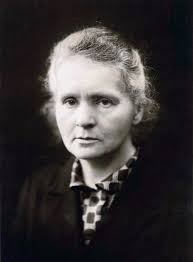
Madam Curie has won her name in history as the only woman who won two Nobel Prizes. Her contributions in Science won awards both in 1903 and 1911. Her contribution to radioactivity has been of vital importance to humankind. After her husband died tragically, she achieved her doctorate in 1903 and acquired his designation as the Professor of General Physics in Sorbonne, Paris, in 1906. She became the first woman to hold this designation. She also got appointed as the Curie Laboratory director in the Radium Institute of the University of Paris. Her fascination and eagerness for discovery on radioactivity ultimately caused an untimely death.
2.Katherine Johnson, NASA Space Scientist
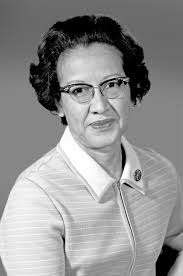
Katherine Johnson made her name in the STEM field by winning the Presidential Medal of Freedom Award in 2015 for her lifetime of work as a pioneering mathematician, physicist, and space scientist. She entered the West Virginia State College in 1932 and was among the first African American woman scientist at NASA in the 1950s. Along with her colleagues, Mary Jackson and Dorothy Vaughan, she made the calculations that guided the Friendship 7 Mission of NASA in 1962. She has also co-authored over 25 scientific papers as a research mathematician and teacher.
3. Rosalind Franklin

Rosalind is earned her reputation in the STEM field for her contribution to X-Ray diffraction images of DNA. Her Photo 51 led to the double helix structure discovered by Watson, Crick, and Wilkins in 1962. Had the Nobel Committee not has a rule not to make nominations after death, Her work would have won it. Watson had suggested that Franklin should be granted the Nobel Prize in Chemistry.
4. Augusta Ada King, Countess of Lovelace & Mathematician
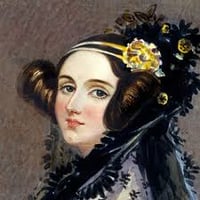
She is known as one of the first programmers who recognized how computers could change our lives. Primarily known as Ada Lovelace, she got into a long working relationship with “the father of computers,” Charles Babbage, because of her mathematical talents. Her strong interest in Babbage’s work on the Analytical Engine eventually led her to be known for her work on the Analytical Engine, his proposed mechanical general-purpose computer. Some believe that she was the first to identify that the machine could be applied beyond calculation. Thus, she published the first algorithm that was intended for a device like that.
5. Radia Perlman, Internet Pioneer

Today, we are using the internet so extensively; we have Radia Perlman to thank. She developed the algorithm for the Spanning Tree Protocol (STP). This innovation was used to” conception the internet as we know it. Not just that, but to not limit STP, she invented TRILL. Dr. Perlman also developed a children-friendly programming language that children could use as young as three years old. Among her other achievements are a textbook about networking and network security and over 100 issued patents.
6. Barbara McClintock:
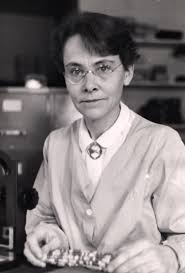
Barbara McClintock was an American Botanist who was responsible for several revolutionary discoveries in the field of genetics.
McClintock’s research made a discovery in the 1940s and 1950s that sometimes genes can be activated because of some genetic elements moving on a chromosome nearby. This discovery wasn’t recognized until decades later by scientists apart from maize specialists.
McClintock won the National Medal of Science in 1971 and the Nobel Prize in Physiology or Medicine in 1983, or this discovery of mobile genetic elements, which are now called “transposons.”
7.Joan Clarke, Code Breaker & Cryptanalyst
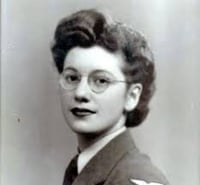
Even though most of her achievements are shrouded in secrecy, considering the events at Bletchley Park are still a little calm, she is known to be the only woman who worked in the core team formulated to crack the German Enigma Ciphers. She and her colleagues Mavis Lever, Margaret Rock, and Ruth Briggs had their works celebrated even though they are not widely known.
8. Chien-Shiung Wu
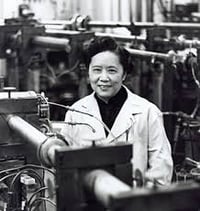
Chien-Shiung Wu is most famed for her Wu experiment, which disagreed with the law of parity conservation. She was an American-Chinese physicist who was a member of the Manhattan Project. Her work helped develop the procedure of splitting uranium metal into Uranium-235 and Uranium-238 isotopes by gaseous diffusion. These discoveries won her colleagues Tsung-Dao Lee and Chen-Ning Yang the Nobel Prize in Physics in 1957, while Wu was awarded the inaugural Wolf Prize in Physics in 1978.
If you ever hear “the First Lady of Physics,” “the Chinese Madame Curie,” or “Queen of Nuclear Research,” know that this is the person being talked about.
9. Rear Admiral Grace Hopper, Inventor & Computer Scientist
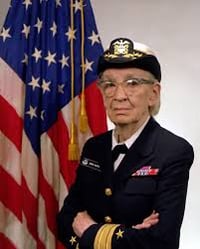
Grace Hopper made programming so much more approachable by inventing the first programming language that used English words. She is the primary inventor of the widely used programming language COBOL (an acronym for OmmonBusiness-OrientedLanguage. She was also the person who coined the term “debugging” after a funny episode of discovering a moth messing up the Mark II computer.
Around 1952 she invented the first-ever known operational compiler after pioneering computers for more than arithmetic in the UNIVAC team.
10. Roberta Bondar, Astronaut Neurologist

She was not only Canada’s first female astronaut but also the world’s first astronaut-neurologist. Among her honors include the NASA Space Medal, Order of Canada, over 22 honorary degrees, the Order of Ontario, and an initiation into the Canadian Medical Hall of Fame. She led an international research team at NASA and studied the consequences of spaceflight and re-adaptation on astronauts after coming back to Earth’s gravity.
Why is coding important for girls to learn at a young age?

1. Coding helps girls with academic performance and problem solving
Girls who learn to code can improve in a range of educational topics such as mathematics, writing, and creativity.
Computer programming tasks always have a beginning, middle and definitive end. It’s almost like telling a story. Code also has its language, where every letter in the alphabet has a unique formula.
The coding process can help girls develop their English language skills and visualize more abstract concepts in a fun format that lets them apply mathematics to real-life problem-solving.
How can one start with coding – a definitive guide explaining how can girls start coding at a young age.
2. Coding helps girls in their future career
In the UK, there’s said to be a shortage of coders. This offers a fantastic future career opportunity for boys and girls that learn to code early. Plus, as it stands, only 15% of UK programmers are female… so there’s room for improvement!
Research suggests that females working in the tech sector can earn as much as 35% more than females working in non-tech jobs.
Companies such as Apple are taking proactive steps to get more girls coding; Apple recently said they want to employ more tech females.
Initiatives like this put your girl at a great advantage if she can learn to code early.
The bottom line is this; if your daughter reaches employment age in the next ten years, having a coding background will put her skills in demand. There should be no shortage of career options.
Compare this to other jobs, and the genuine fear that robotics is set to automate so many current positions, it’s going to put girl coders in a great place.
And lastly, here’s what Professor Wendy Hall at the University of Southampton told The Guardian:
“As we go into the world of AI, when people are designing algorithms that help us live our lives, it will be awful if that’s all done by men. Social care, looking after kids, so many aspects of our lives. We need as many people as possible doing this. It’s imperative, and it’s going to get more important.”
3. Coding can help to empower girls
There are still many people who have opinions of coding being just for boys. A girl that codes can help to prove those people wrong.
Just imagine your daughter designing and building her own computer game (only one of FunTech’s coding courses this summer) or developing her own fully functional robot.
That’s an empowering place for a girl to be, considering the vast majority of kids making this happen will be boys. Your daughter could be the inspiration for the next generation of girl coders.
See if you can get your daughter interesting in programming. Your girl could help bucks the current trends and break down out of date stereotypes.
4. Coding could help your girl change the world
Girls that learn to code from a young age are almost certainly going to be the pioneers of the future.
Your daughter could even go on to change people’s lives. By working on apps, robotics, and other computing programs, she could help shape our future for the better in the education, health, and energy sectors.
Why Girls Should Learn Coding:
- Girls who learn to code are ahead of the curve; after all, the tech world shapes the times we live in and the road ahead. There’s the literate in today’s world, and then there’s the computer-literate; of the two, it’s the latter group that is more poised for success. From airplanes and cars to video games, space exploration, and medicine, programming is now being used in every profession. Publishing this piece, too, needed coding.
Brian Contos, whose daughter is a student at YoungWonks, emphasizes that learning coding is a life skill today. “Like reading, writing, and arithmetic, all kids should learn to code. My daughter doesn’t have to grow up to be a software engineer, but I think it’s important for her and all young people to know how to code and understand computers beyond the basics.” - Women learning to code are better placed to keep pace with men in the workplace. Given that coding is among the fastest-growing fields today, women who code can be part of a bigger job market and receive a higher premium for their work than in other areas. According to a Catalyst report, women in STEM jobs in the United States earned 35 percent more than women in non-STEM jobs and 40 percent more than men in non-STEM positions in 2016.
- Girls who know coding can work at some of the world’s biggest companies, be it NASA or Facebook. You could do so by becoming a white-collar hacker, where you hack to identify security gaps in the company’s website. So coding is ideal for girls who think big.
- Coding can open up a world of possibilities for you. It equips you to create your website or app and build a robot or even a video game. If that doesn’t make you feel powerful, we don’t know what will!
- Knowing to code helps with critical thinking and logical reasoning. “Coding encourages you to deal with large problems by breaking them down into smaller, more manageable ones. It relies on maths and logic to come up with innovative solutions to otherwise complex problems,” says Suchin Ravi, lead instructor at YoungWonks.
- The list won’t be complete without this reason: coding is fun. Imagine creating a game where you are teaming up with Wonder Woman and taking on Ares and Doctor Poison!
What are potential job prospects for women/girl coders?
As per the Women Who Code data, women hold 24 percent of computer programming jobs in the United States. As per the speed at which the world is transforming into the digital age, programming has many potential opportunities for women in computer science.
In the coming years, this figure is only going to rise and many countries already encourage women to step into the field of technology. So we can say that coding holds a very bright and lucrative future for women across the globe.
